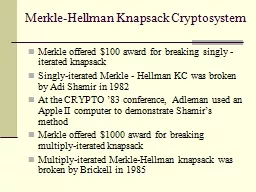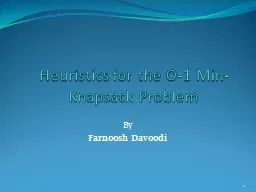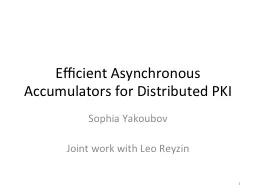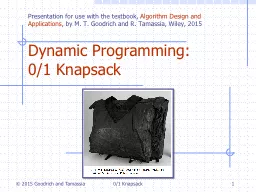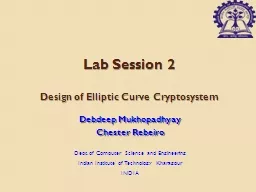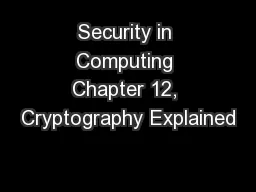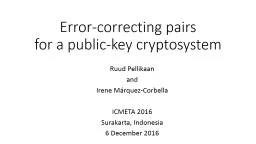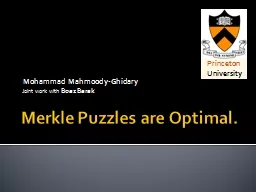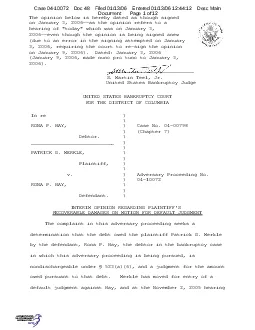PPT-Merkle-Hellman Knapsack Cryptosystem
Author : calandra-battersby | Published Date : 2016-05-20
Merkle offered 100 award for breaking singly iterated knapsack Singlyiterated Merkle Hellman KC was broken by Adi Shamir in 1982 At the CRYPTO 83 conference
Presentation Embed Code
Download Presentation
Download Presentation The PPT/PDF document "Merkle-Hellman Knapsack Cryptosystem" is the property of its rightful owner. Permission is granted to download and print the materials on this website for personal, non-commercial use only, and to display it on your personal computer provided you do not modify the materials and that you retain all copyright notices contained in the materials. By downloading content from our website, you accept the terms of this agreement.
Merkle-Hellman Knapsack Cryptosystem: Transcript
Download Rules Of Document
"Merkle-Hellman Knapsack Cryptosystem"The content belongs to its owner. You may download and print it for personal use, without modification, and keep all copyright notices. By downloading, you agree to these terms.
Related Documents

